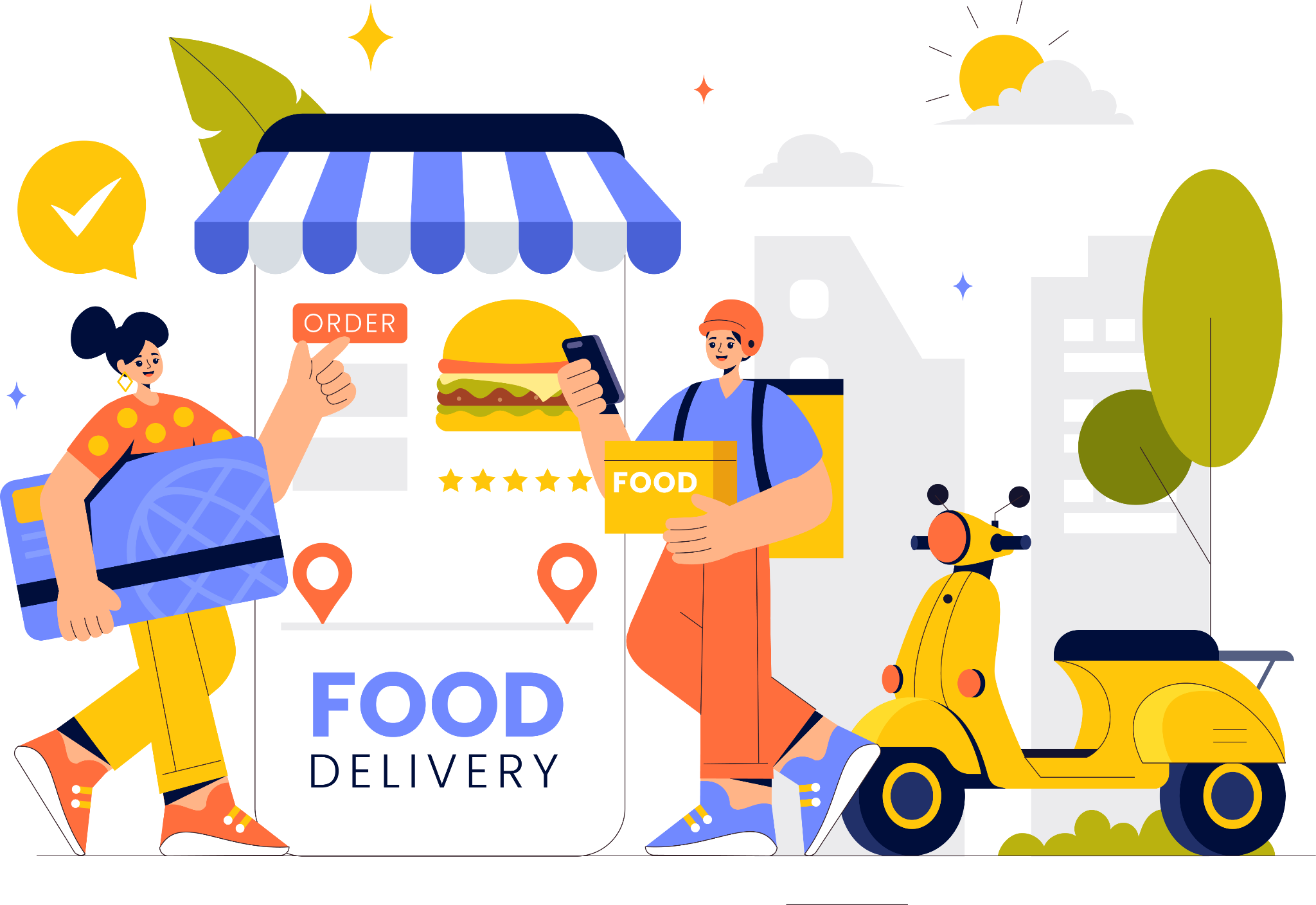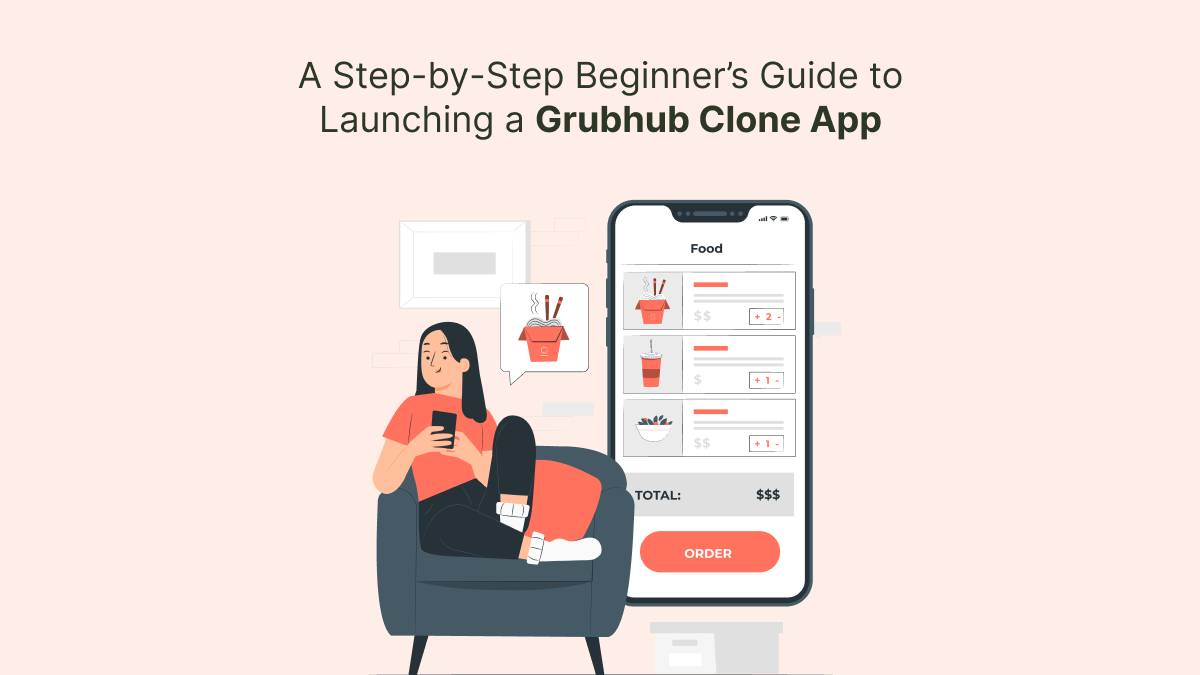Launching a food delivery platform based on the Grubhub model is one of the fastest ways for entrepreneurs to enter the booming on-demand food market. A Grubhub clone app gives you a tested workflow—restaurant listings, order management, delivery logistics, and secure payments—without building everything from scratch. This guide walks a beginner through every practical step: validating the idea, defining core features, choosing technology and partners, developing and testing the product, launching, and scaling. Follow these steps and you’ll move from concept to a market-ready app with repeatable revenue mechanics.
Step 1 — Validate the Idea and Choose Your Market
Before investing money, validate demand in your target city or region. Conduct surveys with local diners and restaurants, analyze competitors (Grubhub, DoorDash, Zomato, Swiggy), and check delivery behavior: peak hours, popular cuisines, and average basket size. Choose an initial launch zone small enough to control operations but representative of broader opportunity—this reduces risk and lets you refine logistics quickly.
Step 2 — Define Business Model & Revenue Streams
Decide how your platform will make money. Typical revenue channels for a Grubhub clone include:
- Commission on orders (percentage from restaurants)
- Delivery fees (flat or variable by distance/time)
- Surge pricing during peak demand
- Subscription plans for users or restaurants (priority placement, reduced fees)
- Featured listings & ads for restaurants
Map pricing to local economics: too high and you lose users; too low and margins vanish.
Step 3 — List Core Features (MVP Focus)
Prioritize an MVP that delivers core value without overbuilding. Essential features for each stakeholder:
Customer app (mobile & web): account/signup, restaurant listings, menu browsing, search & filters, cart, multiple payment options, real-time order tracking, ratings & reviews, push notifications, order history, customer support chat.
Restaurant partner panel: onboarding, menu management, order acceptance, preparation status, sales dashboard, payouts.
Delivery partner app: registration, job alerts, navigation, earnings summary, status updates.
Admin dashboard: user/restaurant management, order monitoring, analytics, promo management, commission setup, support tools.
Step 4 — Choose Technology & Development Approach
Decide between three options: build from scratch, use a white-label clone script, or combine a core platform with custom modules. For beginners, a reputable Grubhub clone script or white-label solution usually offers the best speed-to-market and cost balance. Typical tech stacks: React/React Native or Flutter for cross-platform apps, Node.js or Django for backend, PostgreSQL or MongoDB for databases, and third-party services for payments and maps. Make sure chosen tech supports scale and real-time features (websockets or Firebase-like services).
Step 5 — Design UX That Converts
Food apps live and die by UX. Design frictionless flows for ordering in under three taps from discovery to checkout. Use large food images, clear CTAs, a fast search with suggestions, and saved addresses. For restaurants, create an easy menu editor. For drivers, prioritize simple task lists with big buttons and offline capability.
Step 6 — Build, Integrate, and Test
Develop in sprints. Integrate the essentials: payment gateways (local wallets + cards), maps & routing APIs, SMS/email providers, and push notifications. Test thoroughly across devices and real-world conditions—low bandwidth, GPS drift, order cancellations. Run live pilot tests with a handful of restaurants and drivers to identify operational kinks before a wider launch.
Step 7 — Legal, Compliance & Payments
Set clear contracts with partner restaurants covering commissions, delivery liability, and data sharing. Ensure local business licenses, food safety rules, and insurance for deliveries are in place. For payments, use PCI-compliant gateways and consider splitting payouts to restaurants automatically; maintain accurate tax reporting processes.
Step 8 — Go-to-Market: Launch and Early Growth
A soft launch focused on a few neighborhoods reduces risk. Use tactics that deliver immediate order volume: promo codes for first orders, free delivery windows, loyalty points, and partnerships with popular local eateries. Run targeted social ads and influencer promotions. Encourage restaurants to nudge their existing customers to your platform with exclusive offers—this drives early traction without huge paid spend.
Step 9 — Operations & Customer Experience
Operational excellence differentiates food platforms. Build a responsive customer support workflow (chat + phone), a driver onboarding and incentives program, and strict SLAs for restaurant acceptance times. Use order routing logic that minimizes delivery time and balances driver earnings. Monitor NPS and order completion rates constantly.
Read More: How to Create a Grubhub Clone App to Launch a Profitable Food Delivery Startup
Step 10 — Measure, Iterate & Scale
Track key metrics: Daily Active Users, Orders per User, Gross Merchandise Value (GMV), Average Order Value, Conversion Rate, Delivery Time, Churn, and Customer Acquisition Cost. Use analytics to refine fees, promotions, and operational processes. Once unit economics are proven locally, expand to adjacent neighborhoods and cities, adjusting logistics and marketing per market.
Monetization & Growth Hacks
- Dynamic commissions: Lower for new restaurants, increase for high-demand partners.
- B2B offerings: Offer restaurant software or promotions as paid services.
- White-label partnerships: License your platform to other regions.
- Data-driven upsells: Use purchase history to sell targeted meal bundles or subscriptions.

Typical Costs & Timeline (Ballpark for Beginners)
- MVP with white-label/clone script: $10,000–$30,000 and 4–8 weeks.
- Custom, feature-rich platform: $40,000+ and 3–6 months.
- Monthly ops & marketing: Varies widely—plan at least 20–30% of initial dev cost for the first 6 months.
Costs depend on region, team rates, and depth of customization. Using a trusted clone provider reduces both time and CAPEX significantly.
Common Beginner Pitfalls & How to Avoid Them
- Overbuilding before validation: Start small; measure real demand.
- Ignoring unit economics: Know break-even delivery fees and commissions.
- Poor driver incentives: Optimize pay and bonuses to retain reliable couriers.
- Weak restaurant onboarding: Provide templates and quick training for menu setup.
- Neglecting customer support: Fast resolution prevents churn and bad reviews.
Conclusion
Launching a Grubhub clone app is a practical, cost-effective path for entrepreneurs to enter the food delivery market quickly. By validating demand, focusing on an MVP, choosing the right tech or clone solution, prioritizing UX, ensuring legal compliance, and obsessing over operations and unit economics, you can build a sustainable food platform that scales. If you want to move faster and reduce technical risk, partner with experienced teams offering reliable on demand app development services.
Frequently Asked Questions (FAQs)
How much does it cost to build a Grubhub clone app?
Costs vary: a white-label MVP can be $10k–$30k; a fully custom platform may exceed $40k. Factors include features, platforms (iOS/Android), and integrations.
How long will it take to launch a basic Grubhub clone app?
With a clone script and focused MVP, you can launch in 4–8 weeks. Custom solutions take 3–6 months depending on scope.
Can I integrate local payment methods and wallets?
Yes—choose payment gateways that support local wallets, cards, and settlements. Ensure PCI compliance and automatic split payouts to restaurants.
Do I need to build separate apps for customers, restaurants, and drivers?
Yes. A modular approach—customer app, restaurant panel, driver app, and admin dashboard—keeps responsibilities clear and optimizes each user experience.
How can I reduce initial customer acquisition costs?
Use targeted local promotions, partnerships with restaurants, referral programs, and limited free-delivery offers to drive early orders cost-effectively.


